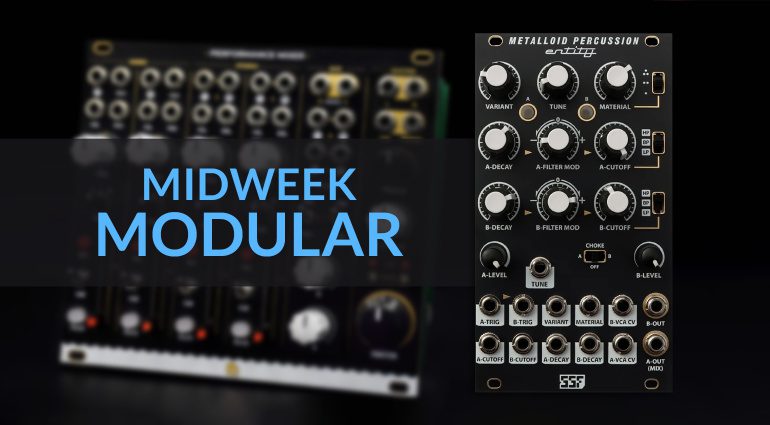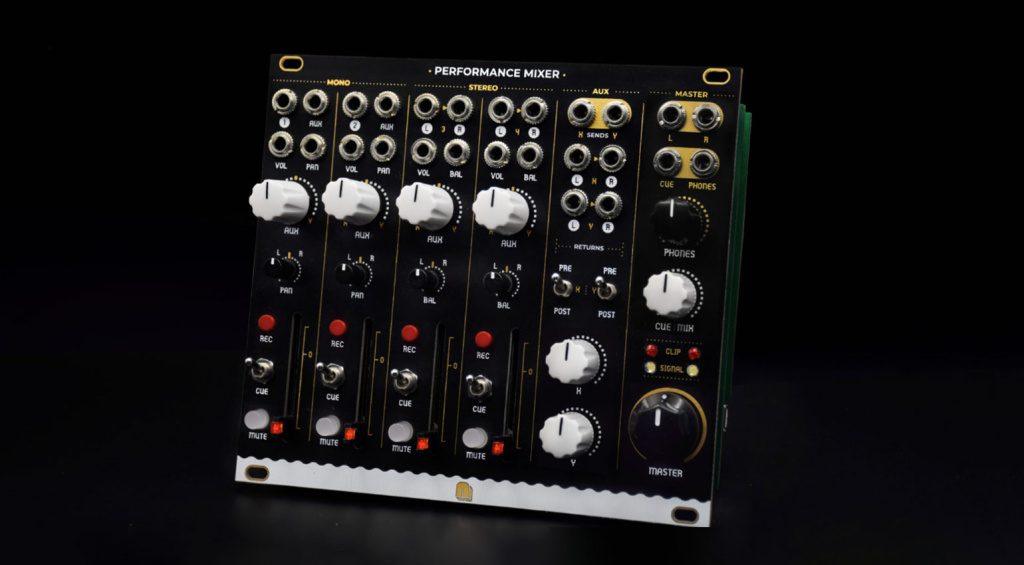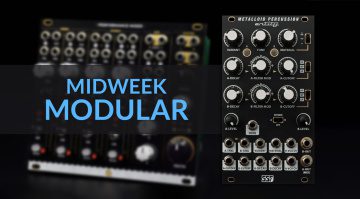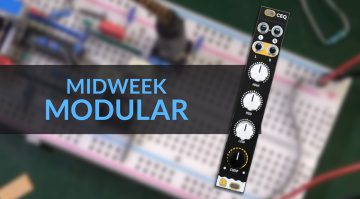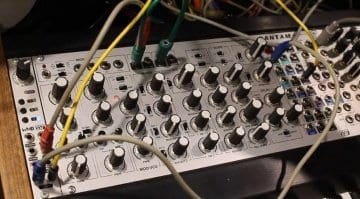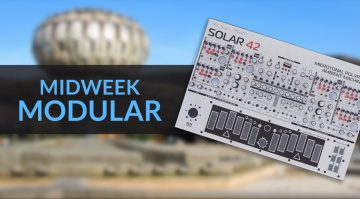Midweek Modular: Auto mixing, precision adding and metallic percussion
This week’s Midweek Modular discovers that Nano Modules will let you automate your mixes, Befaco helps you dial in transposition, and SSF has two channels of clangs and bangs.
Midweek Modular
While the world around us descends into chaos, solace can be found in the movement of electrons through a handful of modules.
Nano Performance MIXER
There appears to be no end to the inventive things modular companies can do with the humble mixer. The Performance MIXER from Nano Modules adds CV control and automation recording to the more regular features of volume, panning, muting and send effects.
You can record automation on the level fader, aux knob and panning for each of the two mono and two stereo channels. Hold the record button and move the control; job done. You can record up to 12 seconds of movement and have it endlessly loop until you either overwrite or clear it. It’s nicely implemented, uncomplicated, and makes great use of the light-up Mute button to tell you what’s going on. With this sort of functionality built into a mixer designed for performance, you’ll be able to nip off for a pint in the middle of your set.
Otherwise, it’s a tidy little mixer. You have two mono channels with CV control over the level, pan and auxiliary send and two stereo channels with CV control over the level and balance. There are actually two auxiliary channels, but each channel can only go to one or the other. Turn the Aux knob left, and it routes to one, turn it right, and it routes to the other. It’s a neat way of dealing with the lack of room for two separate aux knobs. The Aux channels can be pre or post-fader and have stereo returns with level controls.
Along with the master output, there’s a headphone output and a cue output, for which each channel has a switch.
There’s also an expander available to add direct stereo outputs, and CV control over the Mutes and stereo channel Aux sends.
The Nano Performance MIXER has some well-thought-out functionality with just enough channels for a single-case modular system. And as with all Nano modules, it looks really nice. All that technology does come at a cost though; you’re looking at almost 700 Euros with the expander.
- Nano Modules webpage.
- More from Nano Modules.

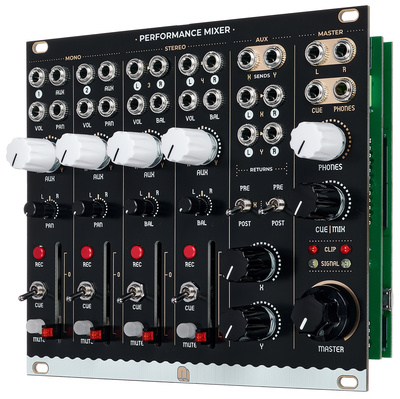
You are currently viewing a placeholder content from YouTube. To access the actual content, click the button below. Please note that doing so will share data with third-party providers.
Befaco Voltio
This is one of those modules you didn’t know you needed that then becomes indispensable. Voltio is a precision voltage adder. It allows you to add precise amounts of voltage to other modules in your rack. But Befaco have designed this with musical intention.
You are currently viewing a placeholder content from YouTube. To access the actual content, click the button below. Please note that doing so will share data with third-party providers.
The top knob gives you a straight-out voltage in either +-5v or 0-10v. You can use it to offset and scale modulations or to give you control over anything with a CV input. But the bottom knob clicks round in very precise semitones. This means you can use it to transpose oscillators or sequences, or set a VCO to a very specific note, or change it to a very specific interval.
Voltio is also useful in calibration oscillators and filters, it has a connection for a multimeter, and the ability to sum in an external voltage. Overall, it’s a very useful and surprising musical utility.
SSF Metalloid Percussion Entity
The latest module in Steady State Fate’s Entity percussion series is Metalloid Percussion. It focuses on the generation of metallic clangs and synthetic scraping noises that can bring an industrial vibe to your modular rhythms.
Inside the module are three competing analogue oscillators, set to different frequencies, which interact in interesting ways. The output is ring-modulated through two signal paths which give us two channels of these remarkably metallic and related tones.
At the top, you have three controls that actually do a lot of different things at once and form the basis of your manipulations. You have Variant, Tunes and Materials, and they all contribute to changing the harmonic content, pitch and clanginess. Underneath, you have a filter, envelope and VCA for each channel to get to work on the dynamics and tonal sculpting. Everything is CV controllable.
The dual-channel nature is really good and gives you a lot of control over two different tones. It makes it far more versatile and brings more to the table as a percussion module.
You are currently viewing a placeholder content from YouTube. To access the actual content, click the button below. Please note that doing so will share data with third-party providers.
 4,2 / 5,0 |
4,2 / 5,0 | 